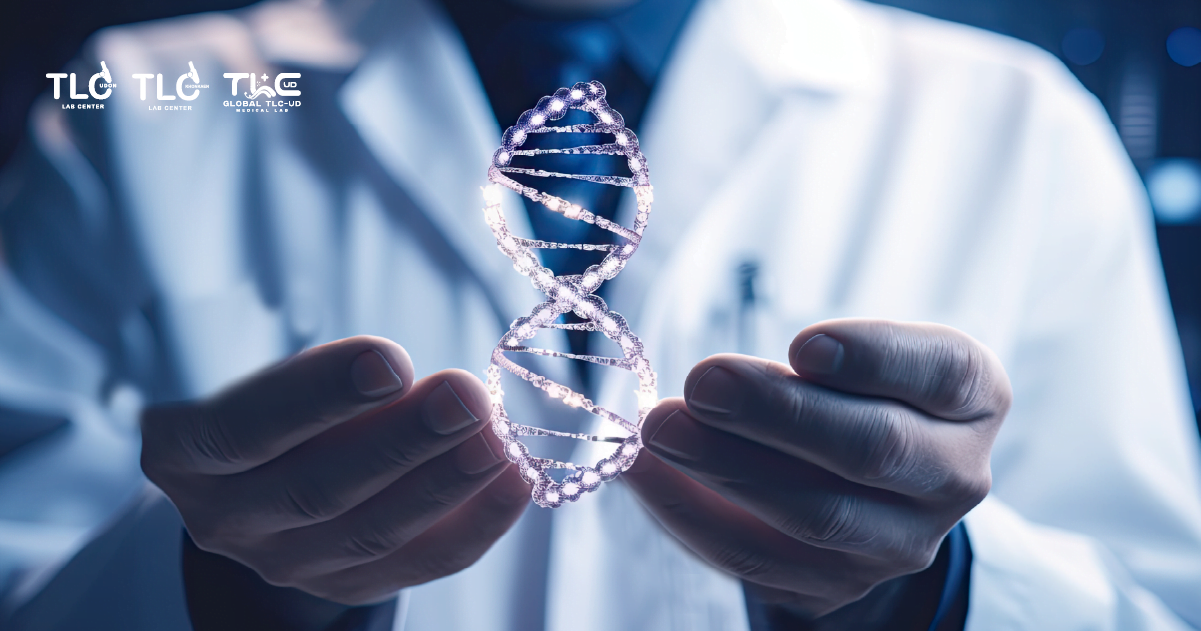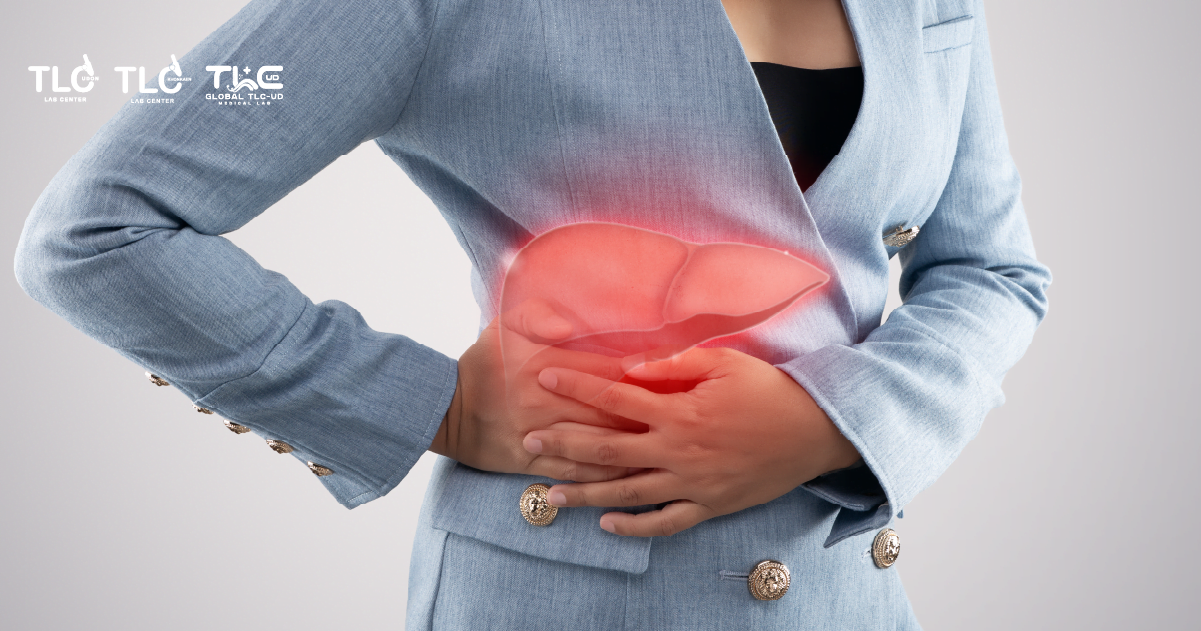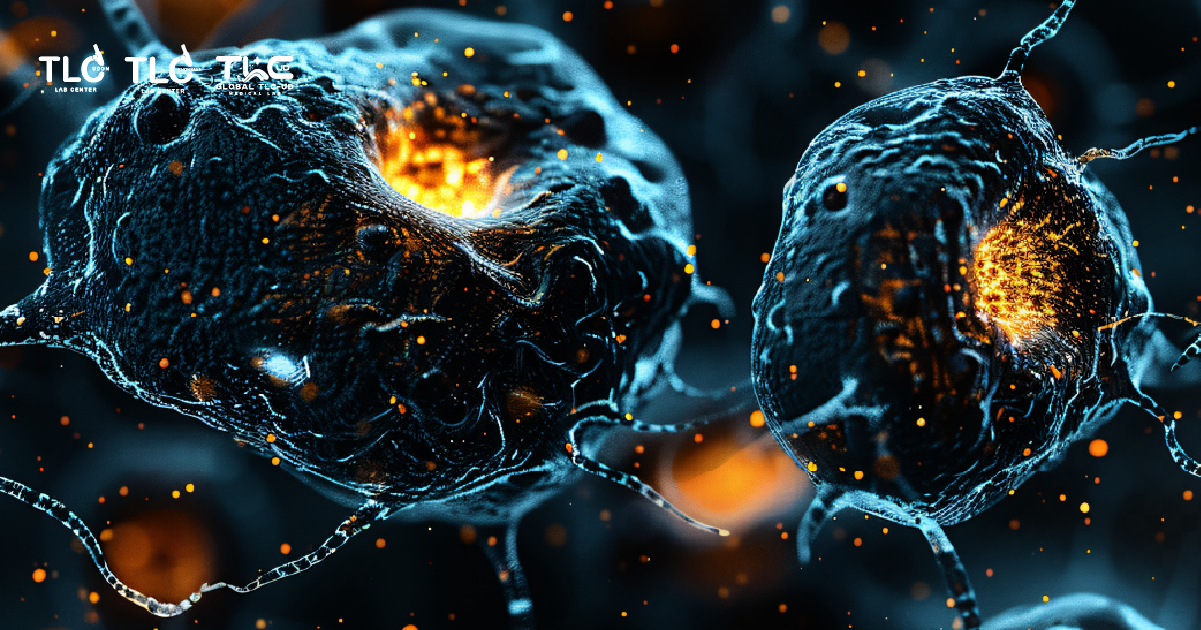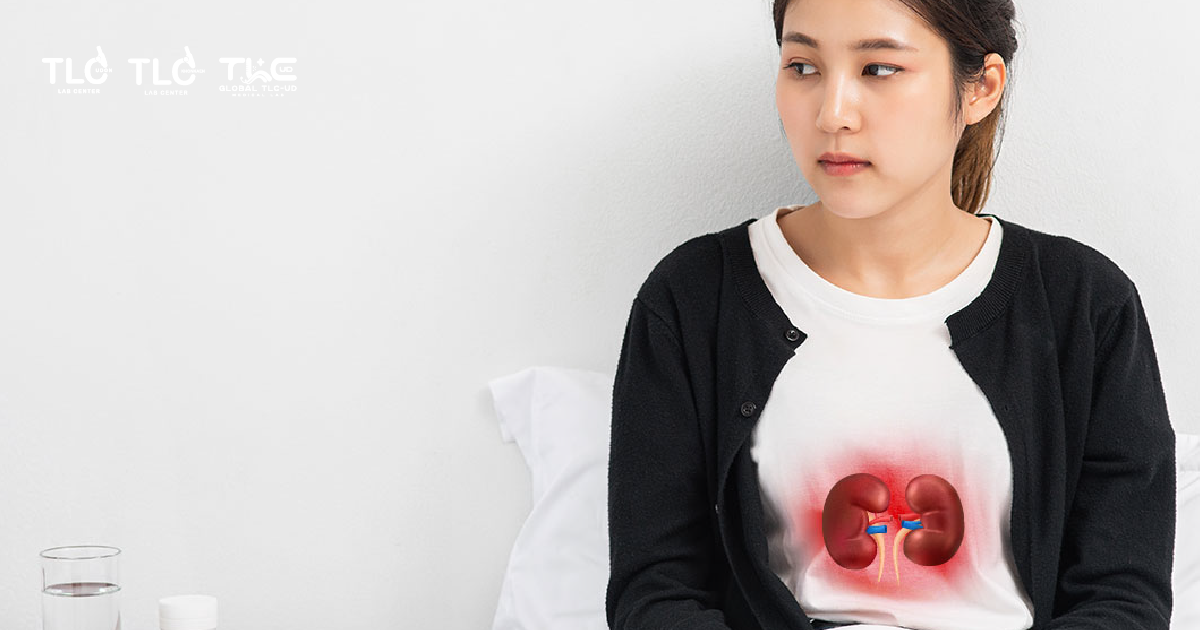UA or Urinalysis is a urine test that is screened by the kidneys in the form of waste and has a liquid state. It is used to check the composition of the urine. Urine tests are performed to determine the physical characteristics of colour, clarity, and certain chemicals, minerals, and vitamins that are essential for the body’s needs.
Benefits of urinalysis
Urinalysis can be an indicator of the health of the internal organ system. Are there any abnormal components that are excreted in the urine, including protein, blood, or is there an infection? This allows the doctor to analyse the results of the urine test, and monitoring and predicting diseases related to the urinary system.
What tests do I need to do for a urine test?
1. Visual Examination
1.1 Urine colour
There are factors that affect the colour of urine, such as urine concentration, the food you eat, the medications you take, and certain illnesses. Urine is usually yellow, and if it is different from yellow, it can be due to many reasons.
- Urine is very diluted, for example, in people who have drunk a lot of water it may be colourless or pale yellow.
- Urine is high concentration,for example,In people who are dehydrated it may be dark yellow, orange, or dark amber.
- Bright yellow urine can be caused by taking a multivitamin or a B complex.
- Red or brown urine can be caused by haematuria, such as urinary tract infection (UTI), nephrolithiasis or renal calculi, ureterolithiasis or ureteral calculi, haemoglobinuria due to haemolysis, myoglobinuria due to muscle breakdown (rhabdomyolysis), porphyria, IgA nephropathy, and exercise-induced haematuria.
- Orange urine can be caused by dehydration, eating a lot of carrots or vitamin C, or taking medications such as tuberculosis drugs (Rifampicin or Rifampin), urinary tract irritants (Phenazopyridine, or Pyridium).
- White urine can be caused by purulent urine (Pyuria), which is the presence of white blood cells, especially neutrophils, mixed in a large amount of urine, often caused by urinary tract infection (UTI) or in patients with severe sepsis or gonorrhoea.
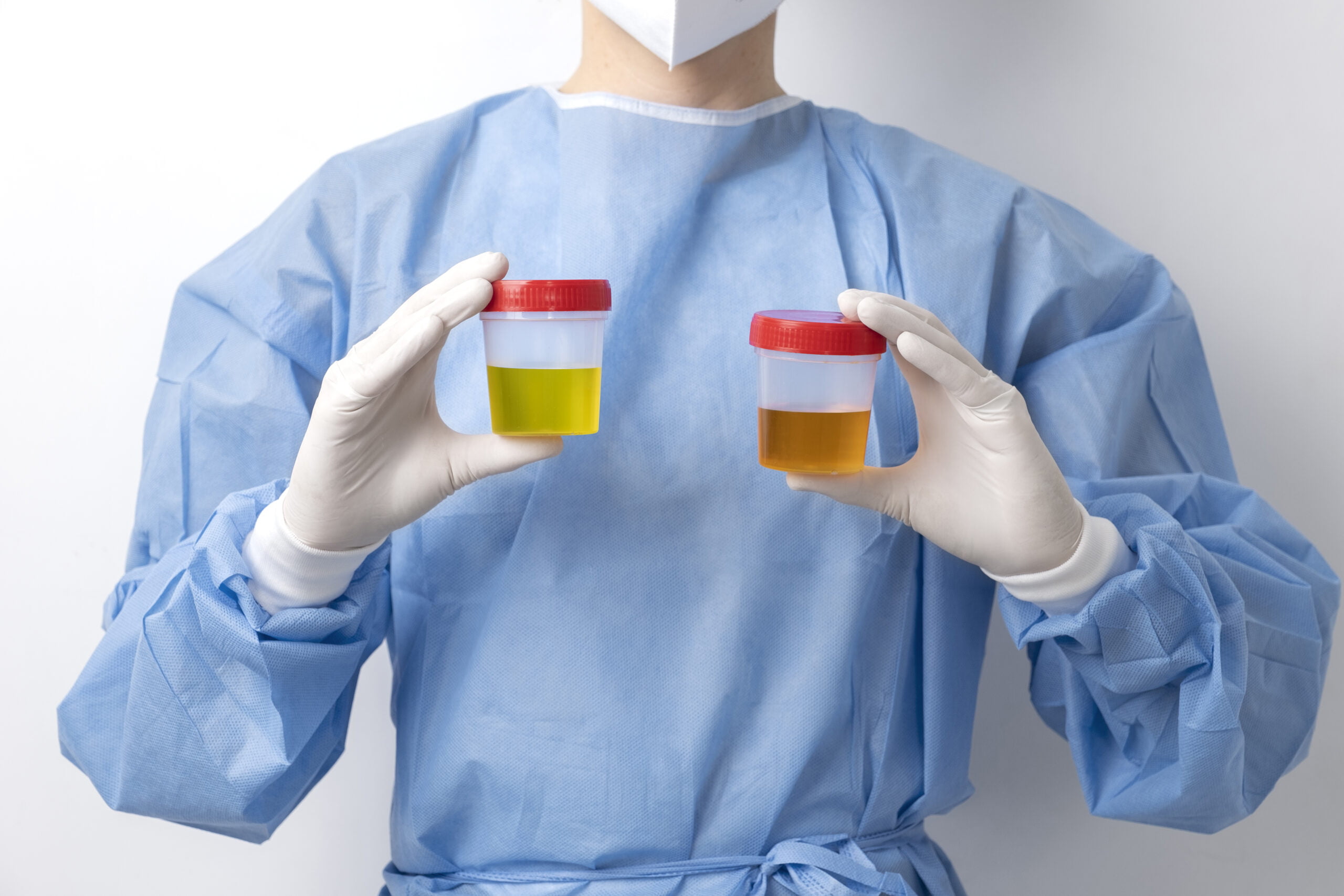
1.2 Urine clarity
Urine clarity indicates the characteristics of the nutrients eaten. The amount of water drunk and the urine test compound from the medication taken is to see how clear or cloudy the urine is. Generally, it is divided into 4 levels:
- Clear
- Mildly cloudy
- Cloudy
- Turbid
The clarity of urine decreases if there is contamination in it, while normal light urine can be clear or cloudy.
Contamination of certain substances found in normal people, such as:
- Mucous
- Sperm
- Prostatic secretion
- Vaginal discharge
- Mucosal cell fragments; Cellular debris
- Urine crystals in contaminants
Contamination of abnormal substances such as:
- White blood cells
- Red blood cells
- Bacteria
- Proteinuria can also make urine cloudy.
Chemical Examination
2.1 Acidity-alkalinity (pH)
Acidity-alkalinity (pH) is the balance of urine that depends on the working conditions in the body and nutrient intake habits. Urine is generally slightly acidic (about pH = 6), but it can be neutral or slightly alkaline.
Factors that make urine more alkaline.
- Eating foods high in citrate, such as citrus fruits, e.g. oranges, grapefruits, and lemons, or eating foods with low carbohydrates and eating a lot of vegetables such as in a vegetarian’s diet, will cause urine to become very alkaline.
- Certain illnesses can make urine more alkaline, such as renal tubular acidosis (RTA), urinary tract obstruction, chronic renal failure or chronic kidney disease, salicylate poisoning, and hyperventilation.
- Bacterial urinary tract infection most often causes urine to become more alkaline due to bacteria such as Proteus and Klebsiella.
Urine acidity and alkalinity It is also important in causing stones because some chemicals in urine will precipitate into crystals and accumulate to form stones. In conditions where urine is acidic-alkaline, such as:
- Calcium oxalate crystals
- Calcium phosphate
- Magnesium-ammonium phosphate
- Deer antler stones (Staghorn calculi) occur when the urine is alkaline.
- Uric acid crystals
- Cystine calculi occur when urine is acidic.
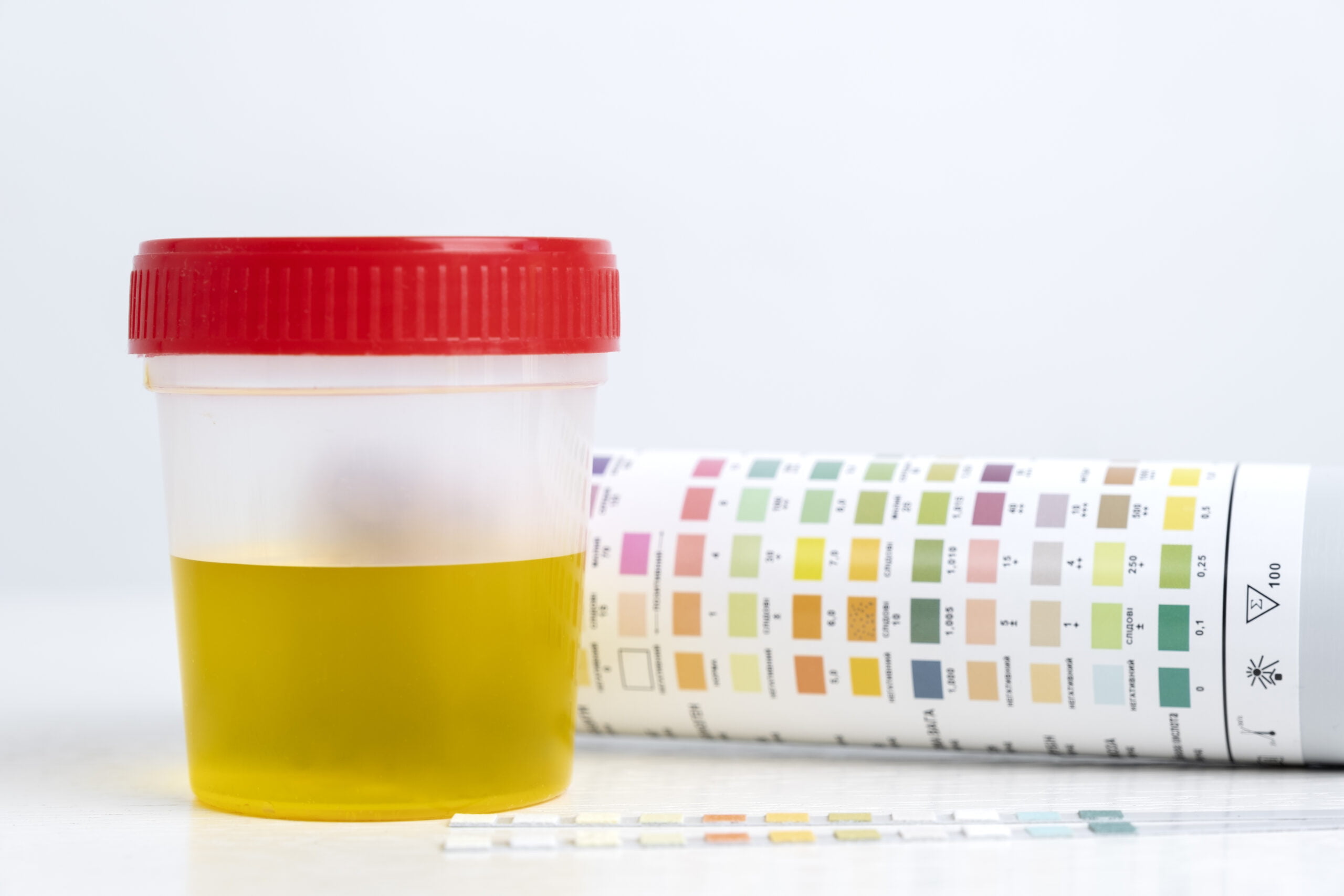
2.2 Specific gravity (SG)
Specific gravity (SG) is the determination of the concentration of urine.
- The reference range of the specific gravity of urine is 1.003 – 1.035.
Low urine specific gravity may be associated with certain body disorders, such as:
- Diuretic use
- Diabetes insipidus
- Adrenal insufficiency
High specific gravity values may also be associated with certain abnormalities, such as glucose in the urine.
2.3 Protein
Protein detection in urine is a screening test used to identify potential kidney damage. While the presence of protein in urine can indicate kidney issues, it can also occur in healthy individuals due to factors such as stress, exercise, fever, or aspirin use.
Proteinuria can be found to be caused by kidney damage which is considered dangerous, the most common is from 2 causes:
- Diabetes nephropathy
- from hypertensive nephrosclerosis
There are many other possible causes, such as nephrotic syndrome, amyloidosis, IgA nephropathy, glomerulonephritis, lupus nephritis, preeclampsia, bacterial endocarditis, light chain deposition disease, multiple myeloma, Fanconi syndrome, etc. It is necessary to undergo a confirmation examination with a specialist doctor, as well as treatment for diseases or conditions that require further treatment.
2.4 Glucose
Glucose is a test for urinary glucose that leaks from excessive blood sugar.
Glucose in the urine is often an indication of high blood sugar levels due to diabetes mellitus, especially diabetes that cannot control sugar levels or diabetes that has not been treated. When the patient’s blood sugar level is high at about 180 mg/dL or more.
Other conditions can also cause glucose to be found in the urine, such as pregnancy, Fanconi syndrome, and Cushing syndrome.
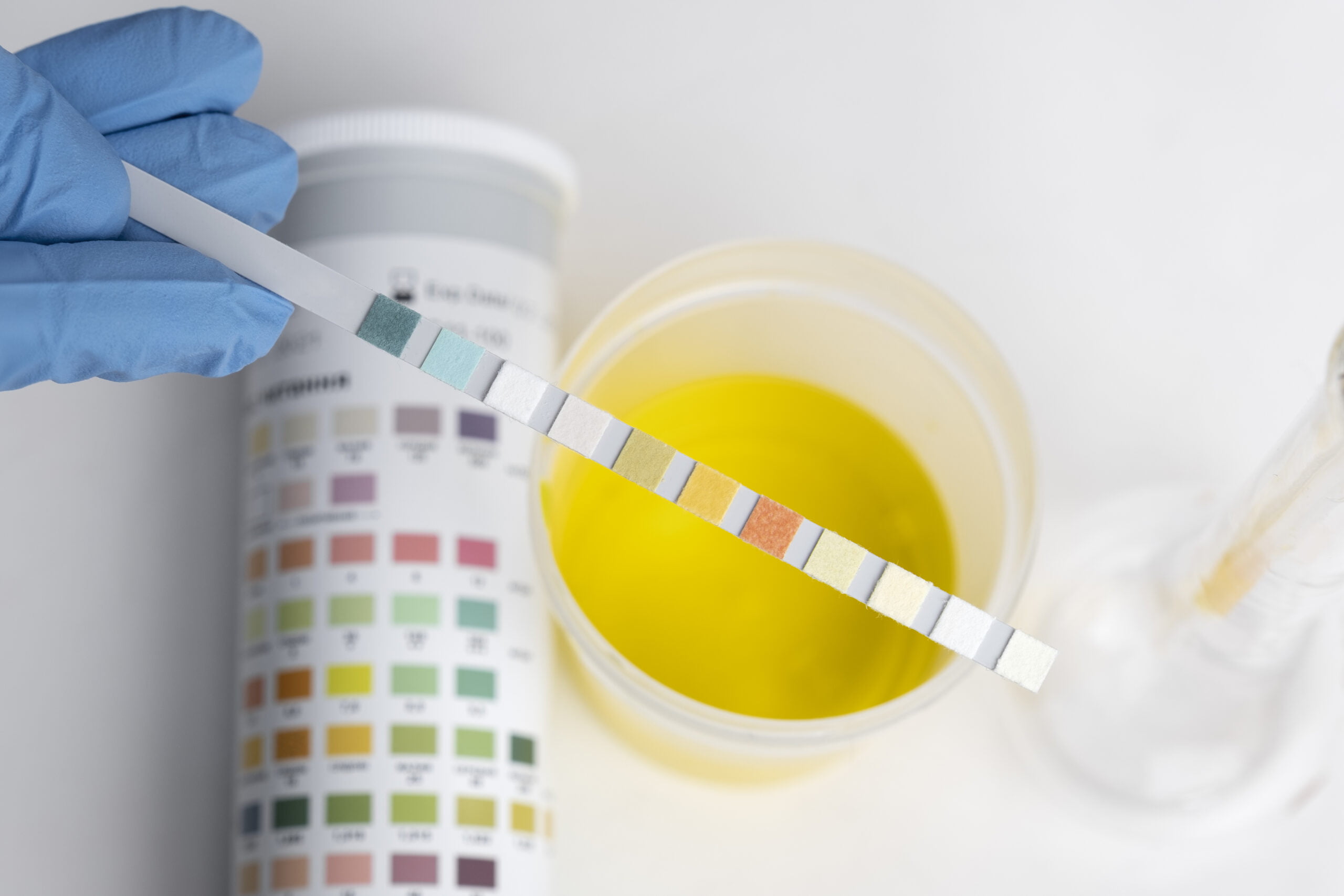
2.5 Ketones
Ketones are the test of the volume of ketones in the urine produced by sugar that cannot be converted into energy for the body. This causes fat to be converted into ketones for energy instead of sugar.
Conditions that can cause ketones to be found in the urine, such as:
- Uncontrolled diabetes mellitus
- Diabetic ketoacidosis (DKA)
- Strenuous exercise
- Starvation
- Prolonged vomiting
- Pregnancy
2.6 Nitrites
Nitrites are not normally found in urine. If nitrite is found in the urine, it is a specific indication that there is a urinary tract infection. Urinary tract infection (UTI)
The reason why nitrate is detected indicates a urinary tract infection is because some bacteria can convert nitrate in urine into nitrite, causing nitrite to be detected in urine samples. Bacteria that can convert nitrates into nitrites, include E.coli, Proteus, Klebsiella, Enterobacter, Citrobacter, Pseudomonas.
2.7 Bilirubin
Bilirubin is a chemical in the body that is produced by the liver. The intensity of the colour increases depending on whether the liver has a blockage in the bile ducts. In normal cases, bilirubin is not found in the urine.
Bilirubin is a chemical in the body that is produced by the liver. The intensity of the colour increases depending on whether the liver has a blockage in the bile ducts. In normal cases, bilirubin is not found in the urine.
- Cirrhosis
- The use of drugs with side effects, such as steroids or psychiatric drugs, causes a slow flow of bile.
- Cancer of the liver or biliary tract such as cholangiocarcinoma and pancreatic tumour.
- Stones that block the biliary tract.
- Hepatitis is characterized by an accumulation of bilirubin in the blood, which is then excreted in the urine and can be detected through testing.
2.8 Urobilinogen
Urobilinogen is the detection of urobilinogen in the urine, which is often considered in conjunction with the urine bilirubin test to isolate diseases.






